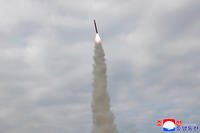U.S. Army artillery units in Afghanistan now have a screw-on fuze that converts standard 155mm howitzer rounds into precision-guided indirect firepower.
The Army recently fielded the XM1156 Precision Guidance Kit, or PGK, to A and B batteries of the 2nd Battalion, 15th Field Artillery Regiment in Regional Command East.
PGK allows for more precise artillery and for fewer civilian casualties on the battlefield. The field artillery has already proven the effectiveness of expensive "smart" munitions such as the Excalibur round. Now they have a cheaper alternative, which still provides the same effective results, according to an Army press release.
"By using the PGK, fire supporters can support the maneuver commander with a more lethal and accurate form of fires," Sgt. 1st Class Cameron Neal, the battalion fire support noncommissioned officer for 2nd Battalion, 14th Infantry Regiment, said in the release. "By being more accurate, we can reinforce the maneuver commander's confidence in his fires, allowing us to be relevant in the current fight."
The PGK allows field artillerymen to attach a precision guidance capability to the projectiles used in the M109A6 Paladin and M777A2 Lightweight 155mm Howitzer weapons systems.
The system is compatible with two standard artillery rounds, including the M795 High Explosive and M549/A1 Rocket Assisted Projectile.
The PGK system uses built-in software, a Global Positioning System receiver, and small "canards," or aerodynamic fins, to provide more accuracy to the round's trajectory. As the round follows its ballistic trajectory, the GPS receiver provides the round's current location and flight pattern.
The system compares that data to the target's coordinates. With this "should hit" versus "will hit" data, the fins rotate to make small corrections to the ballistic trajectory that ultimately guide the projectile on a more accurate path.
Spc. Evan Clayton, an advanced field artillery tactical data system operator with 1st Platoon, Battery B, said the difference in accuracy between rounds fired with conventional fuzes and those fired with PGK were noticed immediately.
"Our rounds are always on target, that's something we pride ourselves on as a platoon," he said. "But watching the PGK's impact on top of each other, round after round, was definitely impressive. The accuracy was definitely noticeable."
The 15th Field Artillery Regiment is not the first unit to receive the PGK. Training on the equipment actually began in Afghanistan in March. Initial fielding of the system will be complete by the end of June.









